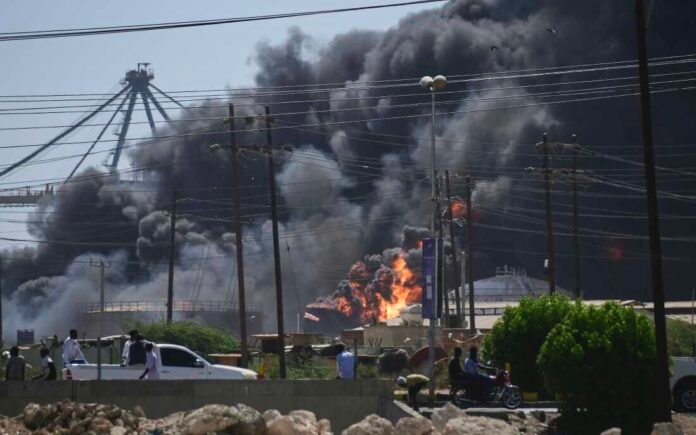Residents of Sudan’s besieged city of al-Fashir are taking shelter in underground bunkers to escape relentless drone and artillery attacks targeting displacement camps, clinics, and mosques, as hunger and violence worsen amid a tightening siege.
Al-Fashir, the last stronghold of Sudan’s army in the western region of Darfur, has been under siege by the paramilitary Rapid Support Forces (RSF) for 18 months in a civil war that has raged for more than two and a half years. The conflict, sparked by a power struggle between military rivals, has fueled ethnic violence, drawn in foreign powers, and caused one of the world’s worst humanitarian crises.
While the army has gained ground in other parts of Sudan, the RSF remains dominant in Darfur, where it aims to establish a rival administration — a move that could deepen the country’s fragmentation. More than one million people have fled al-Fashir, but about 250,000 civilians remain trapped, according to the United Nations, with fears of mass reprisals if the city falls.
Civilians Take Cover from Drones
Residents say they have dug makeshift bunkers to shield themselves from repeated air and drone strikes. Over a dozen civilians contacted by phone, along with verified video footage, described life under constant surveillance and fear.
“We can only bury people at night, or very early in the morning,” said local journalist Mohyaldeen Abdallah. “It’s become normal for us.”
Dr. Ezzeldin Asow, head of the now-abandoned Southern Hospital, said drones follow civilians to clinics. “When you walk, you stick to the wall like a gecko so the drone won’t see you go inside,” he said.
At Abu Taleb school, a displacement shelter, at least 18 people were killed between September 30 and early October in a series of bombardments, drone strikes, and an RSF raid, Abdallah reported. Verified footage showed shattered walls and a body outside a shipping container used as an underground shelter.
Residents blamed the RSF for the attacks, though Reuters could not independently verify who was responsible. Both the army and the RSF declined to comment.
Attacks on Shelters and Mosques
A separate attack on October 10–11 struck the Dar al-Arqam displacement center on university grounds, killing 57 people, including 17 children, according to shelter manager Hashim Bosh. “They were aiming at the mosque,” Bosh said, describing strikes that hit during and after Friday prayers, followed by drone fire as people fled. Satellite imagery from the Yale Humanitarian Research Lab confirmed multiple impact points at the site.
City on the Brink
As the RSF extends barriers encircling al-Fashir, food shortages have turned dire. Even ambaz — animal feed that some had resorted to eating — has run out, activists said. Members of the local al-Fashir Resistance Committee estimate that about 30 people die daily from violence, hunger, or disease.
Bodies now lie uncollected in the streets, posing health risks, according to the Abu Shouk Emergency Response Room, a volunteer network.
“Al-Fashir is basically lifeless,” said Mohamed, a volunteer with the network. “But leaving is even more dangerous than staying.”
The RSF has denied targeting civilians, claiming the city is “devoid of civilians” and accusing the army of using mosques and hospitals as military positions. The Sudanese army has also been accused of using drones in the city but denies responsibility for civilian deaths.
Ghana: Fake Police Officer Arrested At Shatta Wale’s Concert In Accra
With al-Fashir’s siege tightening and humanitarian access cut off, residents face an escalating crisis of violence, hunger, and despair — trapped in a city that is running out of food, medicine, and time.
Morocco U20 Win Historic FIFA World Cup Title, Defeat Argentina In Final
Source:Africa Publicity








